Answered step by step
Verified Expert Solution
Question
1 Approved Answer
Follow these steps describing how the MIRR is calculated to complete the table for Project X. The Project X has just one outflow: $1,000
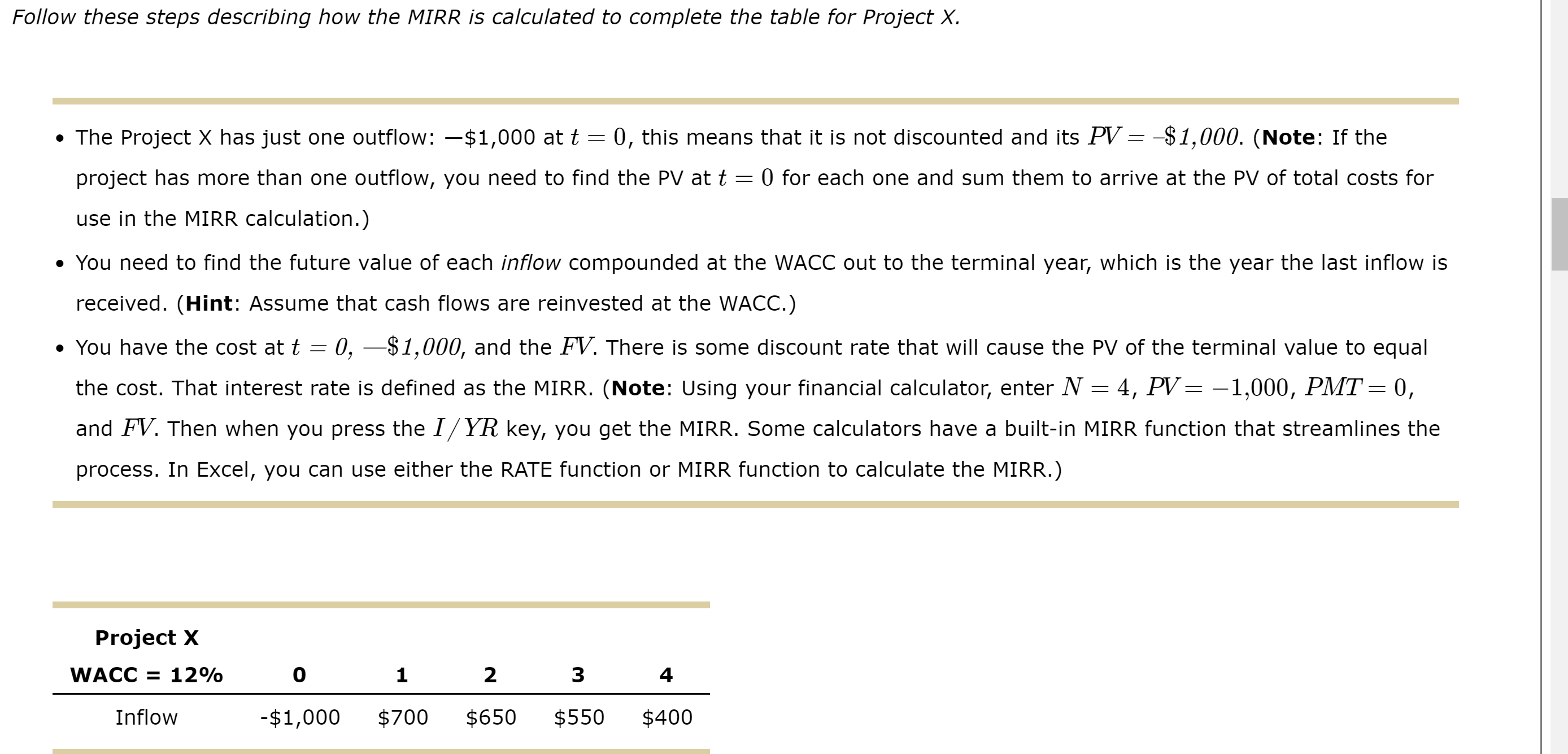

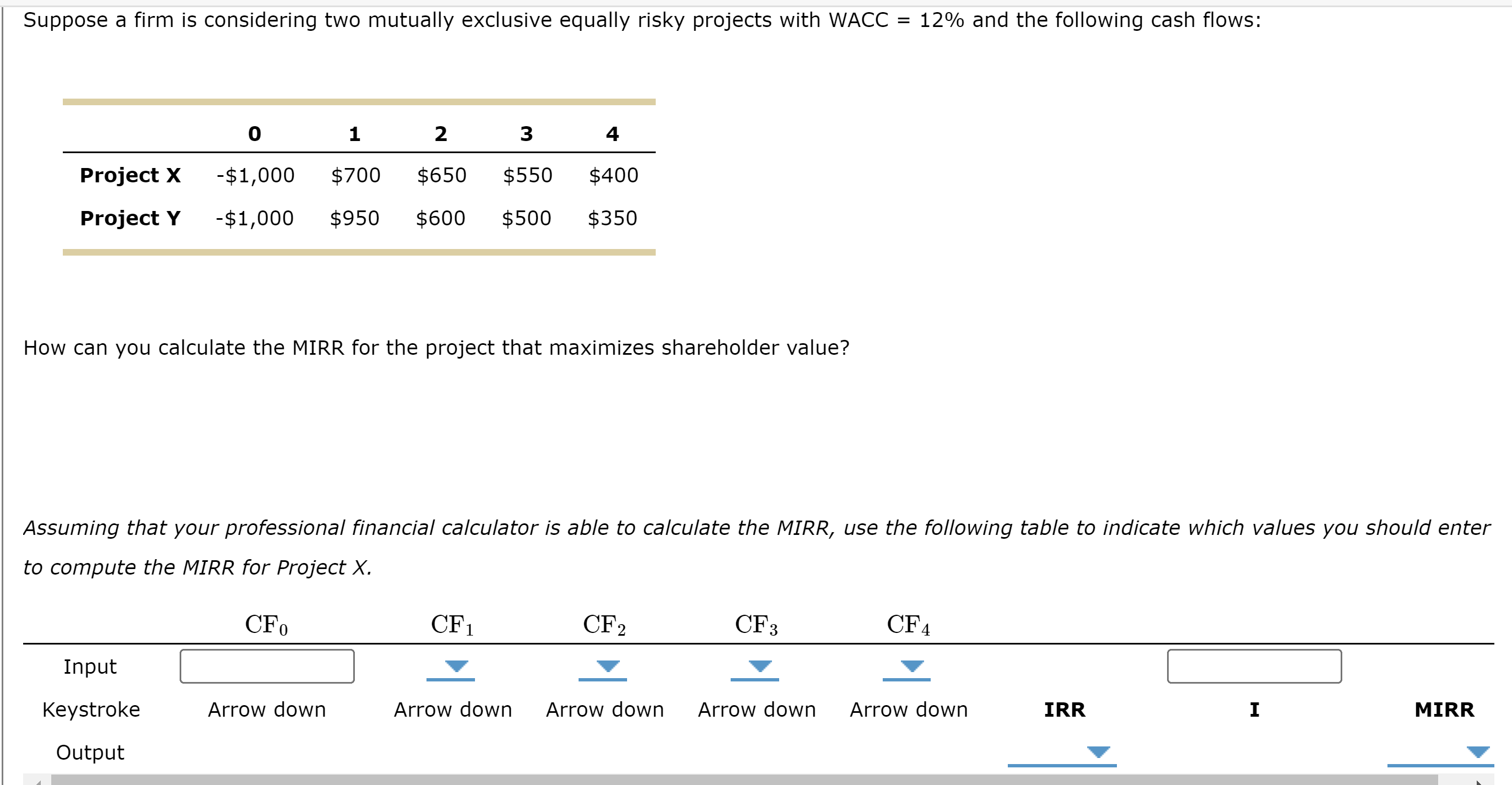
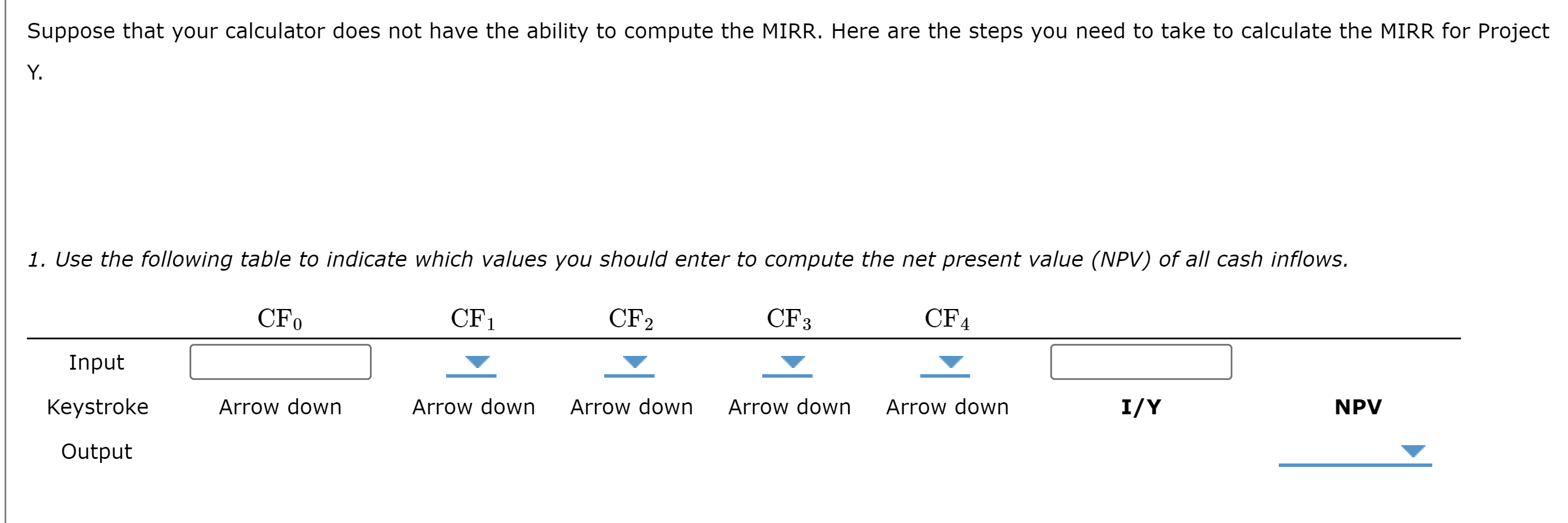
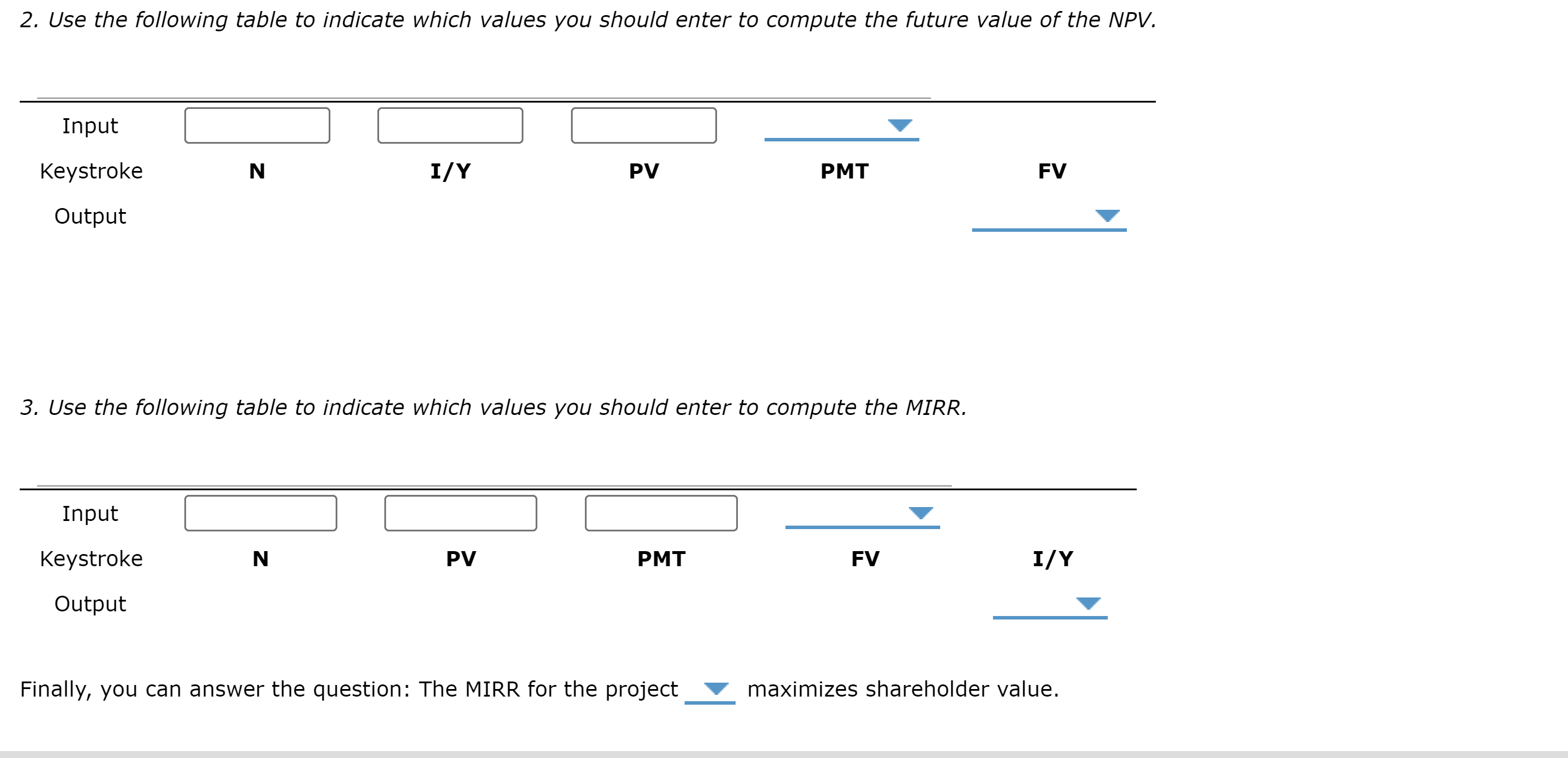
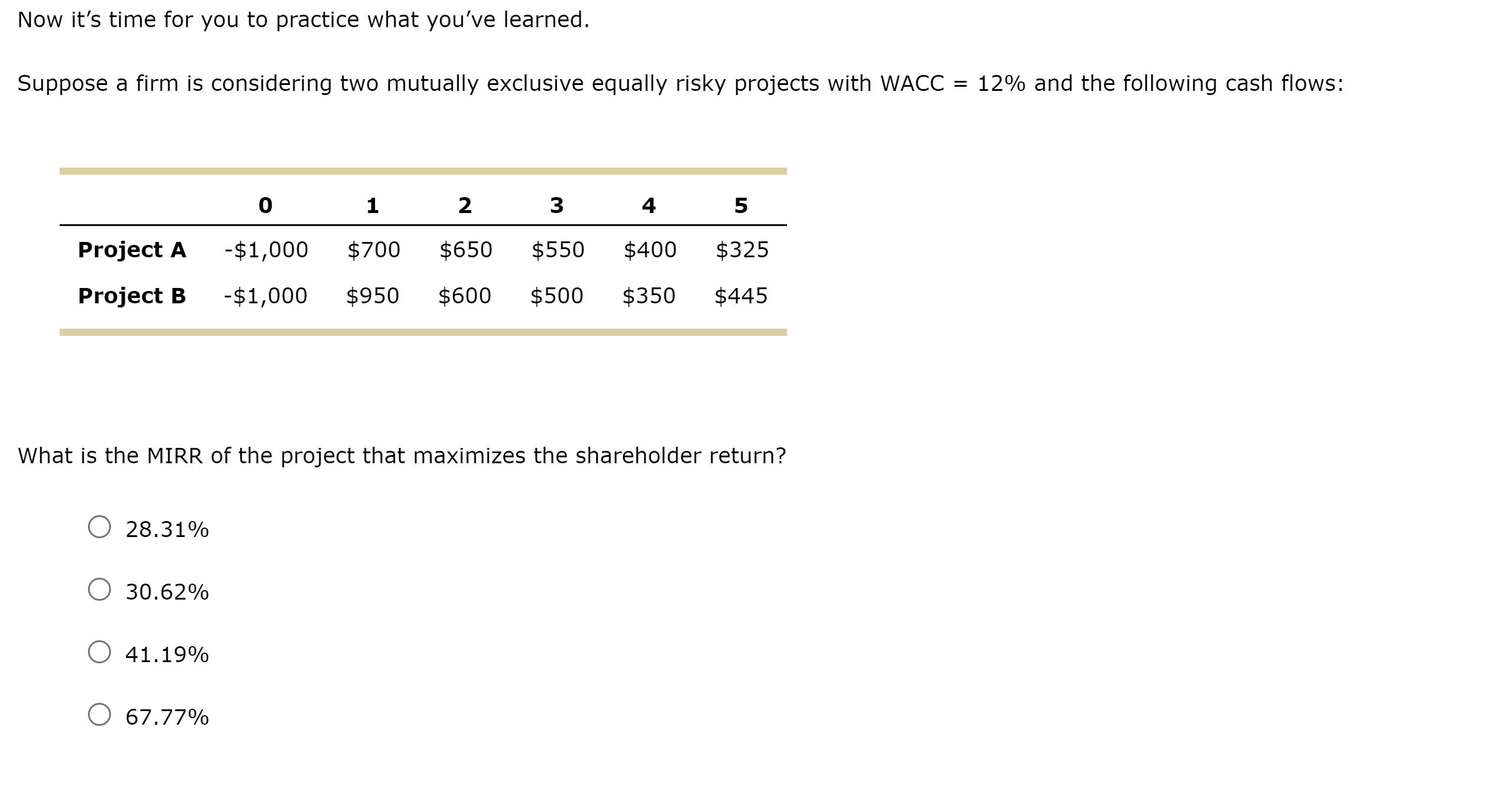
Follow these steps describing how the MIRR is calculated to complete the table for Project X. The Project X has just one outflow: $1,000 at t = 0, this means that it is not discounted and its PV = $1,000. (Note: If the project has more than one outflow, you need to find the PV at t = 0 for each one and sum them to arrive at the PV of total costs for use in the MIRR calculation.) You need to find the future value of each inflow compounded at the WACC out to the terminal year, which is the year the last inflow is received. (Hint: Assume that cash flows are reinvested at the WACC.) You have the cost at t = 0, $1,000, and the FV. There is some discount rate that will cause the PV of the terminal value to equal the cost. That interest rate is defined as the MIRR. (Note: Using your financial calculator, enter N = 4, PV = 1,000, PMT= 0, and FV. Then when you press the I/YR key, you get the MIRR. Some calculators have a built-in MIRR function that streamlines the process. In Excel, you can use either the RATE function or MIRR function to calculate the MIRR.) Project X WACC = 12% Inflow 1 2 3 4 0 -$1,000 $700 $650 $550 $400 Complete the following table. NPV = FV MIRR = = Suppose a firm is considering two mutually exclusive equally risky projects with WACC = 12% and the following cash flows: 2 3 4 0 1 -$1,000 $700 $650 Project X $550 $400 Project Y -$1,000 $950 $600 $500 $350 How can you calculate the MIRR for the project that maximizes shareholder value? Assuming that your professional financial calculator is able to calculate the MIRR, use the following table to indicate which values you should enter to compute the MIRR for Project X. CFO Input Keystroke Output Arrow down CF CF CF3 Arrow down Arrow down Arrow down CF4 Arrow down IRR I MIRR Suppose that your calculator does not have the ability to compute the MIRR. Here are the steps you need to take to calculate the MIRR for Project Y. 1. Use the following table to indicate which values you should enter to compute the net present value (NPV) of all cash inflows. CFO CF2 Input Keystroke Output Arrow down CF1 CF3 Arrow down Arrow down Arrow down CF4 Arrow down I/Y NPV 2. Use the following table to indicate which values you should enter to compute the future value of the NPV. Input Keystroke Output N Input Keystroke Output I/Y N 3. Use the following table to indicate which values you should enter to compute the MIRR. PV PV PMT PMT Finally, you can answer the question: The MIRR for the project FV FV I/Y maximizes shareholder value. Now it's time for you to practice what you've learned. Suppose a firm is considering two mutually exclusive equally risky projects with WACC = 12% and the following cash flows: Project A Project B O 28.31% What is the MIRR of the project that maximizes the shareholder return? O 30.62% 41.19% 0 1 2 3 $700 $650 $550 - $1,000 -$1,000 $950 $600 $500 $350 O 67.77% 4 5 $400 $325 $445
Step by Step Solution
There are 3 Steps involved in it
Step: 1
Here are the detailed stepbystep calculations to find the MIRR of the project that maximizes shareho...
Get Instant Access to Expert-Tailored Solutions
See step-by-step solutions with expert insights and AI powered tools for academic success
Step: 2

Step: 3

Ace Your Homework with AI
Get the answers you need in no time with our AI-driven, step-by-step assistance
Get Started


